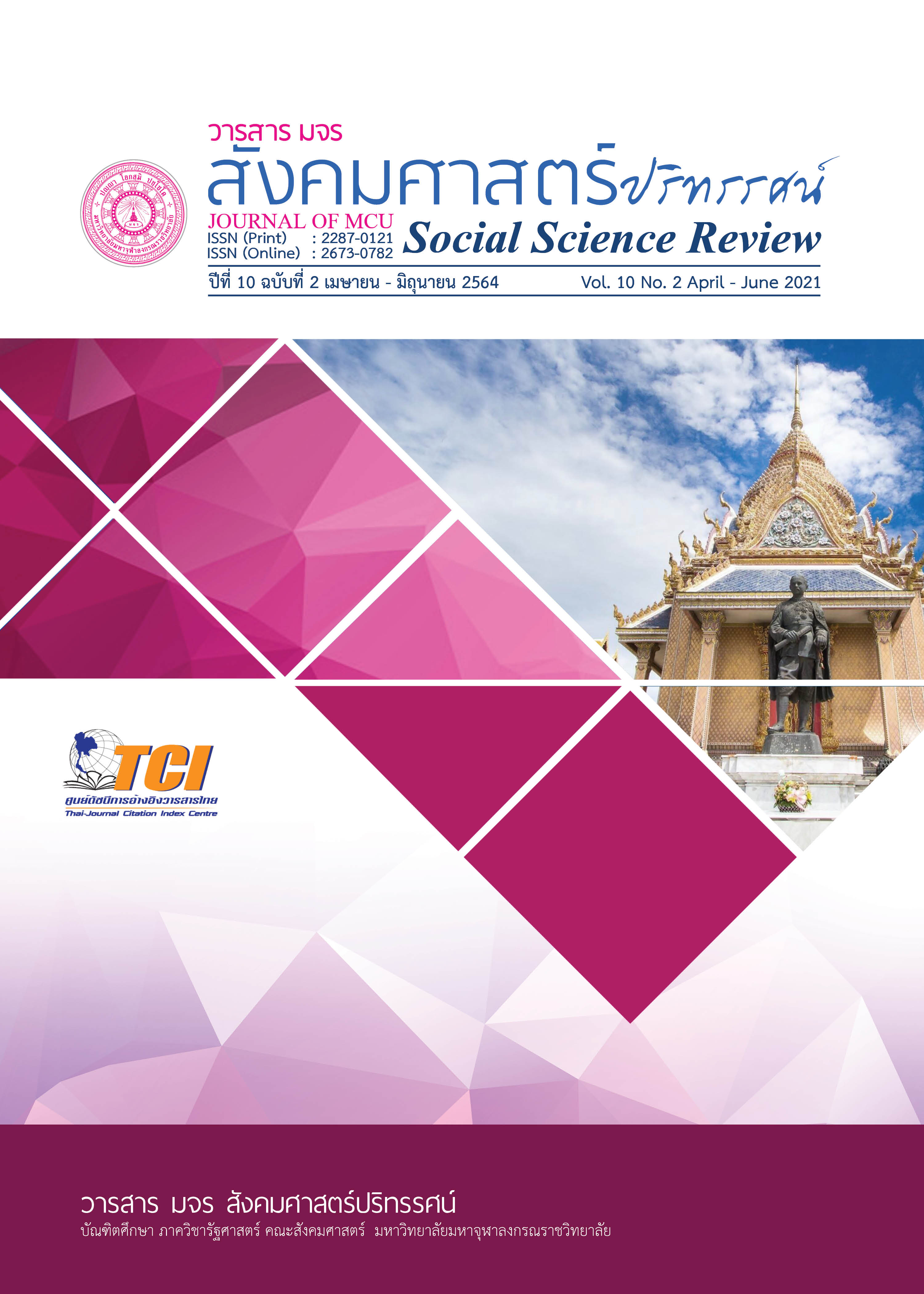การพัฒนาทุนมนุษย์ตามแนวทางรัฐประศาสนศาสตร์
คำสำคัญ:
การพัฒนา, ทุนมนุษย์, รัฐประศาสนศาสตร์บทคัดย่อ
บทความนี้มีวัตถุประสงค์เพื่อศึกษาการพัฒนาทุนมนุษย์ตามแนวทางรัฐประศาสนศาสตร์ เป็นการศึกษาโดยการนำแนวคิดทฤษฎีทางรัฐประศาสนศาสตร์เป็นแนวทางในการพัฒนาทุนมนุษย์ผ่านการสังเคราะห์เอกสาร ตำรา งานวิจัย ผลการศึกษาพบว่า การพัฒนาทุนมนุษย์ตามแนวทางรัฐประศาสนศาสตร์มีความสัมพันธ์กับแนวคิดในกลุ่มมนุษสัมพันธ์และมนุษยนิยมองค์การ โดยเน้นการพัฒนาทุนมนุษย์ที่เป็นปัจจัยภายในบุคคลที่ส่งผลต่อปัจจัยภายนอกองค์การ จากการสังเคราะห์แนวคิดทฤษฎีทางรัฐประศาสนศาสตร์ที่ศึกษาเรื่องพฤติกรรมของมนุษย์พบว่าแนวทางการพัฒนาทุนมนุษย์ตามแนวทางรัฐประศาสนศาสตร์ควรมีองค์ประกอบคือ 1) สร้างบรรยากาศในองค์การให้มีการถ่ายโอนการเรียนรู้ 2) ใช้วิธีการเสริมแรงทางบวกและ 3) องค์การควรให้ความสำคัญกับการอบรมหรือการโค๊ช (Coaching) นอกจากนี้การดึงศักยภาพที่เป็นจุดแข็งของทุนมนุษย์มาพัฒนา โดยไม่จำกัดขอบเขตแห่งความสามารถของบุคลากร จะช่วยให้บุคลากรที่อยู่ภายในองค์การนำไปใช้ให้เกิดประโยชน์กับองค์การของตนและสร้างความได้เปรียบในการแข่งขันและเพิ่มการคงอยู่ภายในองค์การมากขึ้น
เอกสารอ้างอิง
ทศพร ศิริสัมพันธ์. (2560). ส่องทุนมนุษย์ไทยด้วย HCI. สืบค้น 8 มีนาคม 2564,จาก http://doh.hpc.go.th/bs/topicDisplay.php?id=268
บุษกร วัฒนบุตร. (2559). การพัฒนาศักยภาพทุนมนุษย์ในศตวรรษที่ 21. วารสารธรรมทัศน์, 16(2), 163-176.
ปฐม มณีโรจน์ และเสน่ห์ จุ้ยโต. (2555). ความรู้พื้นฐานเกี่ยวกับการจัดการ. นนทบุรี: มหาวิทยาลัยสุโขทัยธรรมาธิราช
พิทยา บวรวัฒนา. (2544). รัฐประศาสนศาสตร์ ทฤษฎีและแนวการศึกษา (ค.ศ.1970-ค.ศ. 1980). กรุงเทพฯ: จุฬาลงกรณ์มหาวิทยาลัย.
สาคร สุขศรีวงศ์. (2551). การจัดการ:จากมุมมองนักบริหาร. กรุงเทพฯ: จุฬาลงกรณ์มหาวิทยาลัย.
สกล บุญสิน. (2555). การสร้างองค์การแห่งการเรียนรู้ของธุรกิจการให้บริการ กรณีศึกษา บริษัท การบินไทย จำกัด (มหาชน). วารสารคณะพาณิชยศาสตร์และการบัญชี, 35(133), 41-66.
Barney, J. B. (1991). Firm Resources & Sustained Competitive Advantage. Journal of Management, 17(1), 99-120.
Garvin, D. A. (2000). Learning in Action: A Guide to Putting the Learning Organization Work. Boston: Harvard Business School Press.
Senge, P. (1990). The Fifth Discipline: The art & Practice of The Learning Organization. London: Century Business.
ดาวน์โหลด
เผยแพร่แล้ว
รูปแบบการอ้างอิง
ฉบับ
ประเภทบทความ
สัญญาอนุญาต
ลิขสิทธิ์ (c) 2021 วารสาร มจร สังคมศาสตร์ปริทรรศน์

อนุญาตภายใต้เงื่อนไข Creative Commons Attribution-NonCommercial-NoDerivatives 4.0 International License.
เพื่อให้เป็นไปตามกฎหมายลิขสิทธิ์ ผู้นิพนธ์ทุกท่านต้องลงลายมือชื่อในแบบฟอร์มใบมอบลิขสิทธิ์บทความให้แก่วารสารฯ พร้อมกับบทความต้นฉบับที่ได้แก้ไขครั้งสุดท้าย นอกจากนี้ ผู้นิพนธ์ทุกท่านต้องยืนยันว่าบทความต้นฉบับที่ส่งมาตีพิมพ์นั้น ได้ส่งมาตีพิมพ์เฉพาะในวารสาร มจร สังคมศาสตร์ปริทรรศน์ เพียงแห่งเดียวเท่านั้น หากมีการใช้ภาพหรือตารางหรือเนื้อหาอื่นๆ ของผู้นิพนธ์อื่นที่ปรากฏในสิ่งตีพิมพ์อื่นมาแล้ว ผู้นิพนธ์ต้องขออนุญาตเจ้าของลิขสิทธิ์ก่อน พร้อมทั้งแสดงหนังสือที่ได้รับการยินยอมต่อบรรณาธิการ ก่อนที่บทความจะได้รับการตีพิมพ์ หากไม่เป็นไปตามข้อกำหนดเบื้องต้น ทางวารสารจะถอดบทความของท่านออกโดยไม่มีข้อยกเว้นใดๆ ทั้งสิ้น





